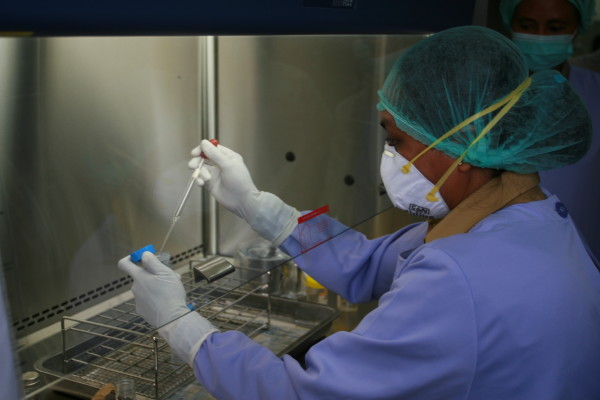You’ve likely heard of tuberculosis or have at least been tested for it at some point in your life. It is an airborne disease caused by a bacterial infection in the lungs, specifically by Mycobacterium tuberculosis. There is extensive knowledge on what the disease can do and how it is caused, but it has remained a prevalent cause of death throughout the world. However, this is not to say that receiving a positive TB test should be interpreted as a death sentence; in fact, available treatment options can be very effective in targeting the disease and vaccines have largely prevented the further onset of such cases in the more resourceful regions of the world. The fact that the disease still persists, however, suggests that more research can be done in order to discover better and cheaper ways of dealing with it. A recent study has done just that, by providing a new perspective on the infection mechanism of the disease.
Image Source: Spencer Platt
UT Southwestern Medical Center researchers have found that microfold cells can serve as a medium through which Mycobacterium tuberculosis move in order to cause infection. Microfold cells are often discussed in terms of their role in the intestines, but can be found in the epithelial lining of the airway as well. The researchers found that Mycobacterium tuberculosis can move through these specialized epithelial cells in order to enter lymph nodes and the lungs. It has previously been known that Mycobacterium tuberculosis causes infection by being inhaled through the mouth or nose, eventually ending up in the air sacs known as alveoli, where they are taken into the body by nearby macrophages. Consequently, effective tuberculosis treatments have targeted this infection pathway through means that likely prevent such incorporation of the bacteria into an individual’s body. But with the new findings in this study, treatments can be modified in such a way to take into account this alternative mechanism of infection.
The results of this study may prove significant in contributing to the ultimate goal of eradicating tuberculosis. Despite having effective treatment options, the fact that some strains may fend off antibiotics more than others points towards the phenomena of antibiotic resistance, which researchers will need to consider when designing future treatments. Overall, the discovery of this new infection pathway may serve to improve the effectiveness of future tuberculosis treatments while hopefully lowering their costs as well.
Featured Image Source: USAID Indonesia










